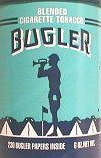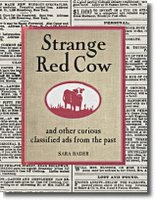 Stopping for an after-Martini Night Martini at Rudyard’s, I met James K Wood, with whom I carefully avoided arguing politics. I did take one of his biz-cards when I left. That’s how I discovered that Jim is President of Scooterteq Motor Corporation – a firm he started to import and market vastly improved electric bicycles.
Stopping for an after-Martini Night Martini at Rudyard’s, I met James K Wood, with whom I carefully avoided arguing politics. I did take one of his biz-cards when I left. That’s how I discovered that Jim is President of Scooterteq Motor Corporation – a firm he started to import and market vastly improved electric bicycles.These, however, are electric bikes that look like Vespas. So the name. They are manufactured to his advanced specs in China. Taking the shortest distance to content, I quote from one of his websites:
Scooterteq electric power assisted bicycles are the only e-bikes specifically designed to meet all North American requirements, from Canada in the North to the southernmost reaches of the United States. We use high power advanced design brushless DC motors and high voltage power systems that will operate at the maximum speed allowed by law. The use of electric bicycles as an alternate method of transportation for both commuting and recreation is widely encouraged by states and provinces.
He’s using the Scooterteq brand to build equity, since the bikes have been imported and sold only in British Columbia, Canada, so far. It’s been his test market. The corporate HQ is here in Houston. But the initial container of Scooterteqs will be shipped to New England, where he’s gained his first US distributorship.
Jim is doubling up by also marketing under another trademark, Eclectic Electric. He has a website for this trademark as well.
From the specifications I can read, and comparing Scooterteq bikes to some of the common-or-garden electric bicycles I’ve found on other websites (here, for example), these are robust machines. And as Jim says, they’re not only legal without licensing (because they’re bicycles, you see); they run at 20 miles per hour with a range of 30 miles. To recharge, just plug ‘em into any wall socket.
Jim has found potentially rich slice of the market, or even two:
- The ever-growing population of 55-and-up people who don’t want the mess and the fuss of gasoline-powered motor scooters – which do require operators’ licenses in all States.
- Near-town or neighborhood bicycle commuters who don’t want to get sweaty on a human-powered bike (a genuine problem anywhere south of the Line, minimum).
Fine niches. His challenge is the start-up, the chicken-and-the-egg problem facing every entrepreneur: selling enough Scooterteq bikes to make money and having enough money to lots of bikes for good penetration.
These are not mopeds. Not the electric-powered stand-up scooters that appeal to the young and well-balanced. And definitely not the Segway Human Transporters drive municipal officials batty every time one shows up on a sidewalk.
The product form-factor is familiar. He’s covered his engineering front. These appear to be stout, efficient machines. (Read the specs for yourself on the website.)
Branding? He knows the issues and thinks he can make “Scooterteq” stand for a new, better form of electric bicycles.
Can Jim’s marketing penetrate the right niches? Can he and his distribution channel gain sales? In time to keep the concept and the company riding the steep grade to success? We’ll check in with Jim from time to time and let you know. Who knows? Maybe he’ll even let me try one – as soon as he gets one to Houston for himself.
Photo courtesy of Scooterteq Motor Corporation, Houston, TX.






 Over the pasture and cross the road, there’s an outstanding little example of trade dress in action.
Over the pasture and cross the road, there’s an outstanding little example of trade dress in action.





